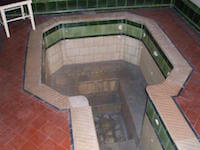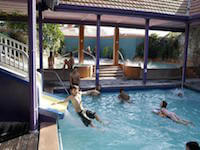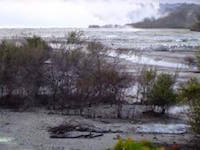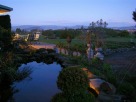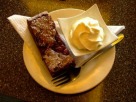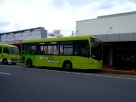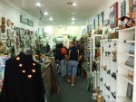- Home
- See & Do For Free
- Government Gardens
Government Gardens
An Edwardian Setting With A Twist
On entering Rotorua's Government Gardens, via the Prince's Gate Arches, you
would be forgiven for thinking you had stepped into an Edwardian
picture book. This isn't the whole picture though.
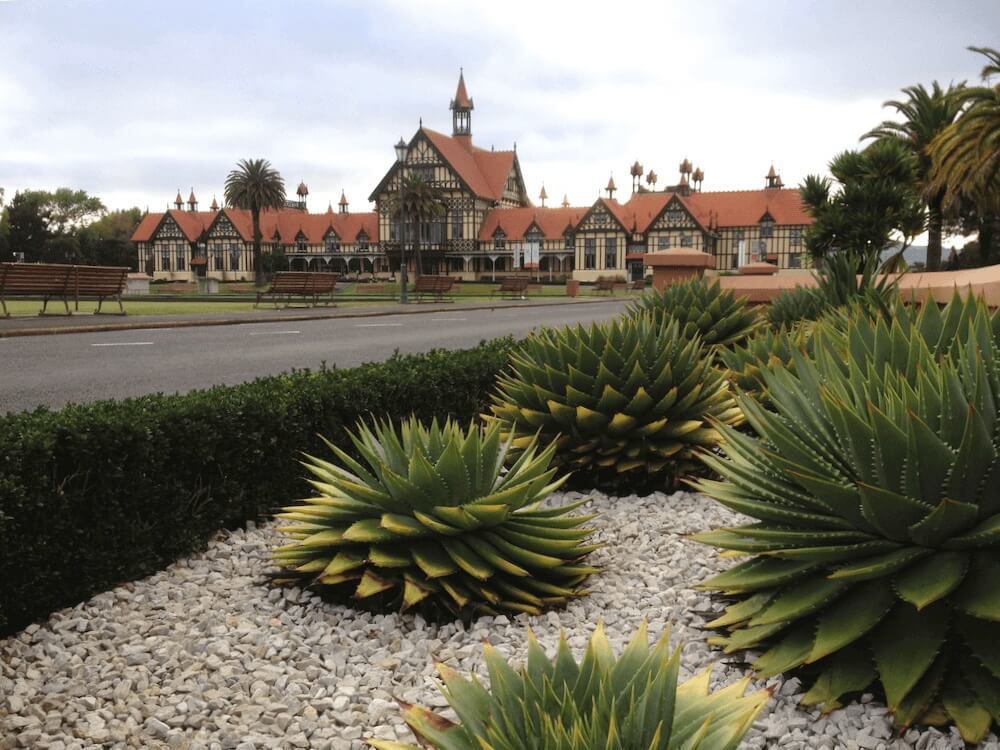 Rotorua's Government Gardens Museum
Rotorua's Government Gardens MuseumThe gardens are in the heart of Māoridom and as such, the culture is
reflected everywhere; in carvings, fencing and also the names on the war
memorial. Add to that the pungent smell of sulfur percolating in the
air and you know you're anywhere but England.
How Does It Tie In?
It's all to do with the fact that Māori in this region were quick to capitalise on the natural geothermal wonders that abounded.
Specifically, wealthy tourists travelled to New Zealand to see the famous Pink & White Terraces - located just outside of Rotorua. These were touted as the eighth wonder of the world at the time. Destroyed in 1866 by the eruption of nearby Mt Tarawera the focus of tourism shifted into Rotorua itself.
Europeans who lived here began to see that tourism in Rotorua could be quite lucrative.
They
worked with Ngati Whakaue (the tribal people of this area) to create a
town that would attract not only the rich and famous but also people who
were looking for cures or rehabilitation in the thermal waters.
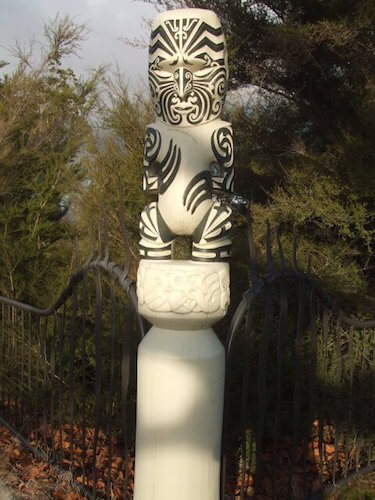 Māori carving
Māori carvingWhat A Gift!
The site that the Government Gardens occupies was gifted to the government by the Te Arawa tribe, 'for the benefit of the people of the world'.
We are so lucky that it is one of the free things to do in Rotorua.
As you enter the grounds, what immediately captures the eye is the imposing Elizabethan building that now houses the Rotorua Museum of Art & History (Te Whare Taonga o Te Arawa). This is 'the most photographed building in New Zealand'.
Once
you can tear your gaze away long enough to look around, you will see
that there is going to be a lot to look at.
How Long To Get Around It All
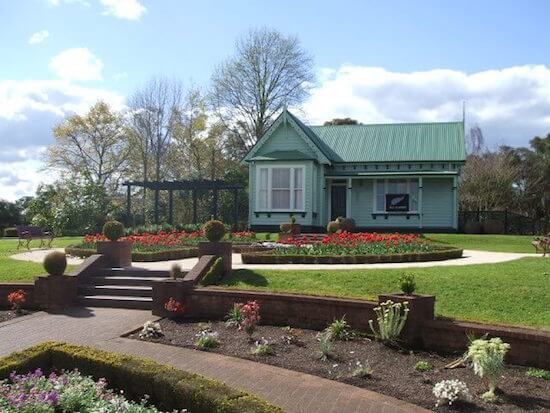 Gardeners Cottage
Gardeners CottageI would think you would need a good 1-2 hours to get around the Government Gardens properly.
Before the museum and Blue Baths closed due to earthquake proofing, adding in a visit to the Museum, Blue Baths or the Polynesian Spa which is still operating, would involve additional time. Plus there were and are costs associated with those three.
To cover the gardens in the most efficient manner, download the Cultural Heritage Trail PDF brochure.
This way you won't miss anything of interest and it includes a map so you won't get lost. The points of interest covered by the brochure are outlined below.
| 1. Carvings - Whakairo | 11. RAVE (Rotorua's Arts Village) |
| 2. Prince's Gate Arches | 12. Whangapipiro - Rachel Pool |
| 3. Wylie Memorial | 13. Blue Baths |
| 4. Ornamental Ponds & Gardens | 14. Polynesian Spa |
| 5. Band Rotunda | 15. Waitukei Sculpture |
| 6. Te Runanga Tea House | 16. Rotorua Museum of Art & History |
| 7. Tawharakurupeti | 17. The Totem Pole |
| 8. Malfroy Geyser | 18. Arawa Soldiers Memorial & Krupps Gun |
| 9. Oruawhata | 19. Gardeners Cottage |
| 10. Site of the Sanitorium | 20. The Croquet Pavilion |
Other Points Of Interest
If you have children with you a lovely playground can be seen from Point 18 on the Heritage Map, The Arawa Soldiers
Memorial.
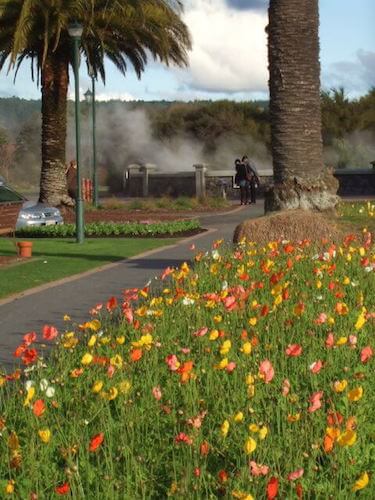 View to Rachel Pool
View to Rachel PoolThe area is flat with lots of paths to push strollers along. In front of the Museum there are Bowling Greens, a place to play Petanque and also a Croquet Green, all currently still in use.
I have a little laugh to myself at the amount of visitors that seem absolutely awe-struck by the Bowling Greens. Of all things!
They roll on the grass, they stroke it, take photos of themselves standing on it and it makes them happy - really, really, happy. Maybe they don't get the opportunity to stand on grass where they come from. Now that would suck.
That reminds me, when my (toddler) nephew moved from the UK to Rotorua with his parents, standing on grass in bare feet scared him. He didn't know what it was. You have to wonder at how far we have moved from the natural world don't you?
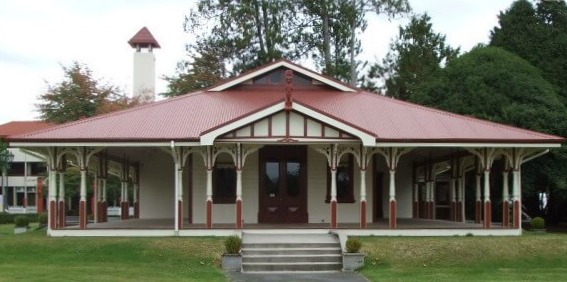 Te Runanga Tea House
Te Runanga Tea HouseThere was a great little cafe at the museum that everyone was free to use. Apart from the food they also sold artwork by locals.
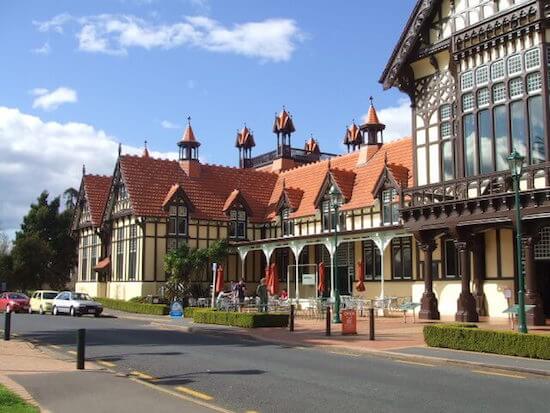 Outdoor setting of the Bathhouse Cafe
Outdoor setting of the Bathhouse CafePeople wandered over from work in the CBD to have a coffee or tea in the peaceful surroundings. It was a great place to relax so hopefully it'll reopen at some point.
If you walk along the road past the Blue Baths, the Polynesian Spa has a cafe that is well utilised. No need to go thirsty or hungry huh?
Also in the area
- Home
- See & Do For Free
- Government Gardens
